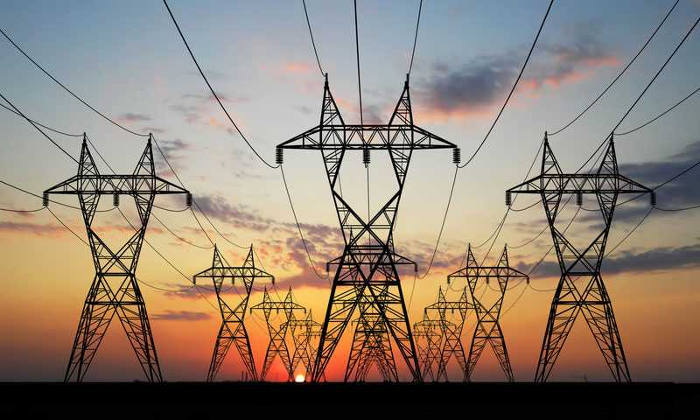Distribution Companies Withhold ₦50bn in Q3 2023, Leading to FG’s N205bn Electricity Subsidy – NERC
Data gathered from the latest report by the Nigerian Electricity Regulatory Commission (NERC) indicates that in the third quarter of last year, the federal government spent around ₦205bn as an electricity subsidy.
According to the Commission’s third quarter market report, the government’s subsidy obligation in 2023/Q3 was approximately 205 billion (or 68 billion per month), up 69 billion from 135 billion (or 45 billion per month) in 2023/Q2.
The paper states that the government’s strategy of coordinating exchange rate movements, caused by the lack of cost-reflective pricing across all electricity distribution companies (DisCos), is mainly responsible for the rise in subsidy payments.
When cost-reflective tariffs are not in place, the government promises to pay the difference (between the two sets of charges) through tariff shortfall funds.
This money will go towards paying DisCos’s bills from the Nigerian Bulk Electricity Trading (NBET) programme. The DisCo’s Minimum Remittance Obligation (MRO) is determined by the rate that they are authorised to charge, as stated in the commission’s periodic rate Orders.
The NERC announced that due to an increase in the government’s subsidy requirement, DisCos were only anticipated to pay for 45 percent of the commission’s entire invoice in Q3 2023.
The news follows NERC’s revelation that DisCos withheld ₦50bn from the power industry in Q3 of last year.
It was reported by NERC that in Q3/2023, the DisCos did not send around ₦50bn to NBET.
According to the market remittance part of the Q3 2023 Quarterly Report, NERC stated that DisCos owed a total of around 208bn in upstream invoices. Of this, 167bn was for generating costs from NBET and 41bn was for transmission and administrative services provided by the Market Operator (MO).
According to NERC, out of the whole money, the discos sent ₦158bn (₦124bn to NBET and about ₦34bn to MO), leaving a balance of ₦50bn. Compared to the 95% reported in 2023/Q2, this results in a remittance performance of around 76% in 2023/Q3.
The remittance performance in 2023/Q3 was 74%, with a total of 124 billion rupees sent from NBET to the DisCos, against an MRO-adjusted invoice of 167 billion rupees.
After reaching a record high of 99.99 percent in 2023/Q2, DisCos’s remittance performance to NBET in 2023/Q3 dropped to 74.0 percent, a decline of 25.0 percent. Despite a 9% rise in the MRO adjusted invoice in 2023/Q3 (₦167bn) compared to 2023/Q2 (₦154bn), DisCos’s remittance performance dropped significantly, falling 18% from 2023/Q2 (₦152.48bn) to 2023/Q3 (₦124.53bn).
Approximately 268 billion rupees, or 349 billion rupees, were received by all DisCos in 2023/Q3 from clients. As a result, the efficiency of the collection process is 76%.
The overall collection efficiency of the DisCos rose 1% from 75% in 2023/Q2. The reason behind this is that total billings fell 1.4% from 354.61 billion in 2023/Q2 to 268 billion in 2023/Q3, even if total collections were somewhat different (0.09 percent).
When comparing 2023/Q2 to 2023/Q3, the collecting efficiency of all discos showed an improvement, with the exception of Eko and Abuja. Between 2023/Q2 and 2023/Q3, the DisCos with the most notable improvements in collection efficiency were Yola (+2.9 percent), Kaduna (5% increase), and Ikeja (3% increase).
The collection efficiencies of Eko DisCos were 3.1% lower while those of Abuja DisCos were 1.2% lower. A number of collection campaigns launched by DisCos in 2023/Q3 aimed at increasing remittances from post-paid customers may have contributed to the overall improvement in collection efficiency.
Installing metres (particularly prepaid metres for non-maximum demand clients) is the most established strategy for reducing collection losses.
Consequently, in order to enhance end-use customer metering in their franchise area, DisCos are expected to employ one or more metering frameworks as outlined in the NERC MAP and NMMP metering regulations (2021). As a result, upstream market players will see a decrease in commercial and collection losses and an increase in the flow of cash.
To make sure enough energy gets to the customer groups or clusters with the best collection efficiencies, DisCos should keep looking at ways to optimise their energy distribution in accordance with the Service Based Tariff (SBT) regime.
To ensure that generating and transmission capacities are available, it is vital to pay upstream charges promptly. Since the majority of DisCos’ permitted income are located at the bottom of the waterfall, the regime encourages them to increase their collections.
As a requirement for the Nigerian Electricity Market Stabilisation Facility (NEMSF) intervention, which was extended to the DisCos in 2013, the CBN established an escrow mechanism. The deal states that the DisCos will not have access to their income until all necessary deductions to repay their loans have been done. You could see how well the DisCos were doing financially in terms of collecting thanks to this escrow system as well.
Clients from Other Countries Were Unable to Send N8.5bn
The National Energy Regulatory Commission (NERC) reported that out of the four international clients served by GenCos in the NESI, none of them paid the $11.16 million total invoice issued by the Ministry of Energy (MOE) for services provided in 2023 and Q3.
At the time, the currency rate was ₦775/41, which means that the four international customers did not remit around ₦8.5bn.
The Nigerian Electricity Supply Industry (NESI) had 16 bilateral customers, according to NREC, but none of them paid the total of ₦2.8 million that the Ministry of Energy (MOE) had awarded them for services provided in 2023/Q33.




